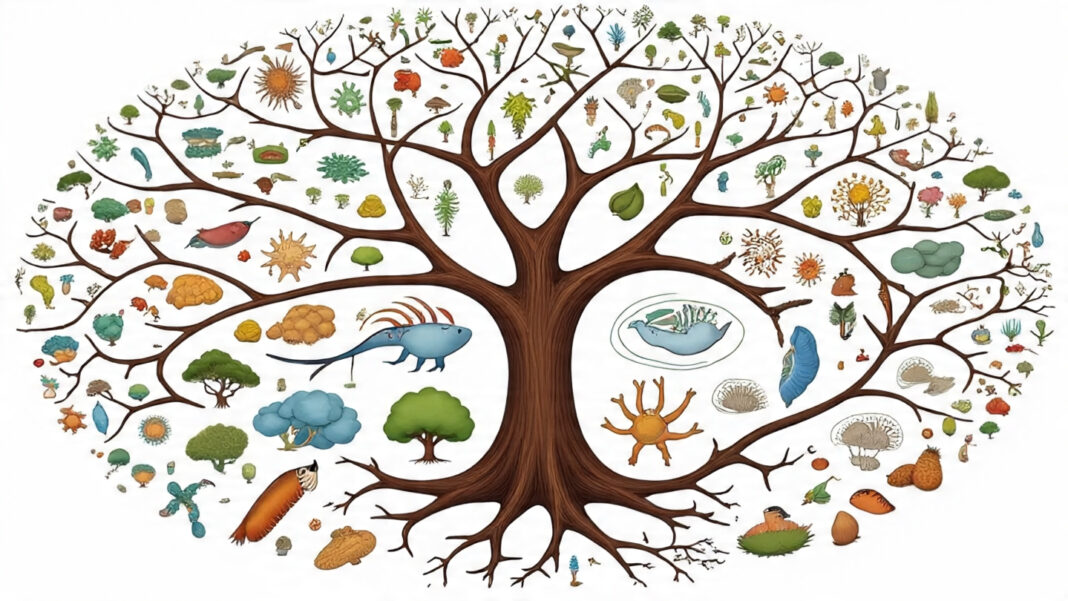Speciering is an attractive yet complex process that plays an important role in the development of life on Earth. This explains how new species run by biological and environmental factors emerge over time. Understanding speciering enhances our knowledge about biodiversity and highlights the complex web of interaction within the ecosystem.
There are speculation in its lineage from every living organisms to mammals – from mammals. But does it really define a species? How do genetic mutations, natural selection and other mechanisms contribute to this process? This article examines the mechanism of speciering, its types, real-world examples, and its importance in modern science.
Definition of Species: Concepts and Norms
Scientific species use various approaches to define:
- Biological species concept – focuses on breeding isolation. Species are groups that produce interpreter and fertile children.
- Circular species concept – classifies organisms by physical symptoms such as shape, size and color.
- Phylognetic species concept – emphasizes shared dynasty and genetic deviations over time.
- Ecological species concept – defines species by ecological niche that they occupy in an ecosystem.
These concepts highlight that species are not directly defined, as the boundaries can be blurred between closely related organisms.
Importance of Studying Speciering
It is necessary to study speciering because it:
- Explains how new species arise and adapt over time.
- Traces the start of evolutionary lineage and adaptive strategies.
- Supports conservation efforts by predicting biodiversity changes.
- Guides agriculture and medicine through insights on genetic diversity.
- Strengthens our understanding of ecosystem and ecological balance.
Nerve Driving System
Many mechanisms contribute to speciering:
- Genetic mutation – DNA changes show variation in population.
- Natural selection – Beneficial symptoms are passed, shaping development.
- Genetic drift – Random changes in small populations lead to deviation.
- Breeding isolation – Prevents mutual action between the population, which leads to independent development.
Genetic Mutation and Variation
Mutation in DNA – prosperized by replication errors or external factors – produces genetic variations.
Types of mutation include:
- Point mutation
- Investment
- Deletion
- Revision
While some mutations are harmful or neutral, others increase existence and reproduction. This variation provides raw materials for natural selection and fuels speciering.
Natural Selection and Adaptation
Natural selection is central for speciering. This ensures that species pass on favorable symptoms and adapt to their environment.
Forms of adaptation include:
- Structural adaptation – Changes in the form of body (e.g., beak size in the finch).
- Behavioral adaptation – New mating rituals or feeding habits.
- Physiological adaptation – Internal changes that improve survival.
As the environment changes, species should adapt or risk extinction.
Role of Genetic Drift
Genetic drift refers to random changes in allele frequencies.
- More impressive in small or isolated populations.
- Islands can cause unique symptoms to dominate species.
- Bottleneck effect – A decrease in population reduces genetic diversity.
- Founder effect – Small groups starting new colonies develop differently from their source population.
These random processes often accelerate speciering.
Reproductive Isolation
Breeding obstacles are the key to speciering:
- Prezygotic obstacles – prevent fertilization (e.g., different mating seasons, behaviors).
- Postzygotic obstacles – hybrids are sterile or unable (e.g., mule).
Over time, isolated populations become genetically distracted and develop into separate species.
Types of Speciering
Various routes of speciering exist:
- Allopatric speciering – geographical isolation leads to deviation.
- Sympatric speciering – occurs within the same habitat due to behavior or ecological differences.
- Parapatric speciering – neighboring population deviations with environmental gradients.
- Peripatric speciering – small isolated groups develop rapidly.
- Hybrid speciering – interaction between species produces a stable hybrid population.
Examples of Speciering in Nature
- Darwin’s finches – developed different beak forms to use various food sources.
- Cichlid fish – thousands of species emerged in the great lakes of Africa.
- Darwin’s orchids – unique flowers developed for special pollinators.
- Peppered moths – color changes during the industrial revolution.
- Wolves – populations turned into sub-species in different climates.
Implications of Speciering in Modern Science
Research on speciering affects many areas:
- Conservation biology – predicts extinction risks and protects biodiversity.
- Agriculture – guides crop breeding for flexibility and disease resistance.
- Medicine – helps in understanding human development and pathogen adaptation.
- Genomics – tracks evolutionary changes through advanced sequencing.
The study of speciering deepens our understanding of life and guides sustainable practices.
Conclusion
Speciering is the cornerstone of evolutionary biology. It explains the origin of biodiversity, highlights the flexibility of life, and shapes our strategies in science, conservation, and sustainability. By studying its mechanisms and examples, we not only learn how species emerge but also how they adapt, survive, and thrive.
FAQs about Speciering
1. What is speciering in biology?
Speciering is the process by which new species develop through genetic variation, natural selection, and reproductive isolation.
2. What are the main types of speciering?
The primary types are allopatric, sympatric, parapatric, peripatric, and hybrid speciering.
3. Why is speciering important in science?
It explains biodiversity, evolutionary history, and guides conservation, agriculture, and medicine.
4. Can speciering occur quickly?
Yes, in cases of rapid environmental changes or small isolated populations, speciering may occur relatively rapidly.
5. What is an example of speciering?
Darwin’s finches on the Galapagos Islands, which developed various beak shapes, are a classic example.

